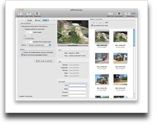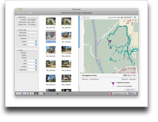It seems that every few weeks, I have another fight with OS X server. I still run Leopard Server as most of our Xserves are PPC and won’t run Snow Leopard, so these issues may have been addressed. I was moving our wiki and our sites from one server to another and that’s where the fun started. It appeared that the setting for where the wiki would be located wouldn’t stick. There appeared to be an issue with LDAP.
When I was touching the Web settings, I saw error messages in the log like was reported here
May 27 20:17:22 server servermgrd52: servermgr_web: htcleancache disabled May 27 20:17:22 server servermgrd52: *** -WPWebServices updateWebServices:withVirtualHosts:withSession:: Couldn't update the WebServices record in /LDAPv3/127.0.0.1. Reason: Unable to set value(s) for dsAttrTypeNative:apple-serviceinfo in record$. May 27 20:17:22 server servermgrd52: servermgr_web: Failure saving group services update: (null) May 27 20:17:22 server servermgrd52: servermgr_web: Multi instance key 'SSLLog' has a single value=''! May 27 20:17:22: --- last message repeated 2 times ---
(I was so frustrated, I didn’t copy the error messages, so what you see above is from the link referenced above.)
I gave up on this the other day and hacked on LDAP to get things working, but today I had to revisit it. I was starting to wind down my work day today when I had a stroke of genius; the error message referenced a host that I thought I had changed (I thought that when the LDAP server was setup, forward and reverse DNS were setup as those are critical to Open Directory working). I remembered one reference to the old hostname in Workgroup Manager. I went in Workgroup Manager, clicked on the computer tab, selected the old hostname, and changed the name to the real name, saved the entry, restarted servermgrd and presto, the error went away! Yeah!
I might give Snow Leopard server a test drive, but as long as Apple wraps command line tools up with a GUI, there are going to be problems. There is no way that they can handle all possible issues
If this solution helps you and saves you time (I think I spent a full day fighting with this), please purchase something through the Amazon link.


